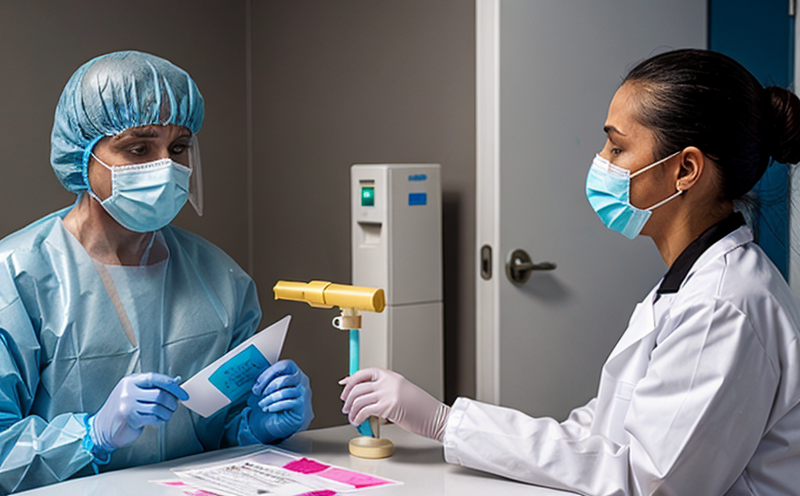Campylobacter spp. Testing in Poultry Processing
The presence of Campylobacter spp. is a critical concern within the poultry industry due to its association with foodborne illness, particularly gastroenteritis. This bacterium is one of the most common causes of bacterial enteric diseases globally. The U.S. Centers for Disease Control and Prevention (CDC) estimates that Campylobacter infections are responsible for over 126 million cases annually, leading to significant public health issues. Proper testing and control measures are essential in poultry processing facilities to ensure food safety.
In the context of poultry processing, effective detection of Campylobacter spp. is not only a regulatory requirement but also an important step towards reducing contamination risks. Regulatory bodies such as the U.S. Department of Agriculture (USDA) and Food and Drug Administration (FDA) mandate testing to ensure that processed poultry products do not exceed allowable levels of pathogens. Compliance with these standards is crucial for maintaining consumer trust and avoiding potential legal and financial repercussions.
Testing protocols must be stringent, ensuring accurate identification of Campylobacter spp.. This includes the use of appropriate sampling methods, such as swabbing or scraping surfaces in processing areas, to collect potentially contaminated samples. Specimen preparation is critical; samples should be preserved under controlled conditions to prevent degradation and ensure reliable results during testing.
The choice of test method plays a pivotal role in detecting Campylobacter spp.. Common methods include culture-based techniques utilizing selective media like Campy-BAP or immunological assays such as ELISA. However, molecular methods using PCR have become increasingly popular due to their high sensitivity and specificity. Each method has its advantages; for instance, culture-based techniques are useful for identifying specific serotypes, while PCR offers rapid results with the potential to detect multiple pathogens simultaneously.
Once samples are prepared, they undergo rigorous testing in accredited laboratories. Laboratories must adhere to international standards such as ISO 17025 and ISO/IEC 17026 to ensure reliability of test results. Reporting procedures are critical; reports should include detailed information about the sample, testing methods used, results obtained, and any corrective actions recommended.
Implementing a robust testing program offers several benefits beyond compliance with regulations. It helps in identifying potential contamination sources early, enabling targeted interventions to prevent further spread of Campylobacter spp.. This proactive approach not only enhances food safety but also protects the reputation of poultry producers and processors. Additionally, consistent testing facilitates continuous improvement in hygiene practices within processing facilities.
Why It Matters
The importance of Campylobacter spp. testing cannot be overstated given its impact on public health and food safety. Beyond regulatory compliance, the economic implications are substantial. Recalls due to contamination can lead to significant financial losses for processors and retailers alike. Moreover, maintaining consumer confidence is paramount in this industry, where trust plays a key role in brand loyalty.
From an operational standpoint, testing provides valuable insights into the effectiveness of current sanitation protocols. By identifying areas of weakness, facilities can implement targeted improvements that lead to better overall hygiene standards. This not only reduces the risk of contamination but also contributes to higher quality products and increased efficiency within processing operations.
The broader implications extend to public health as well. Reducing Campylobacter spp. levels in processed poultry helps mitigate the spread of this pathogen, thereby protecting vulnerable populations such as children, elderly individuals, and those with compromised immune systems. Public health officials rely on accurate testing data to monitor trends and implement strategies aimed at controlling outbreaks effectively.
In summary, Campylobacter spp. testing is essential for maintaining the integrity of the poultry industry. It ensures regulatory compliance while enhancing food safety practices and public health outcomes. By investing in comprehensive testing programs, processors can safeguard both their operations and consumers against potential risks associated with this pathogen.
Scope and Methodology
| Test Parameter | Description | Methodology |
|---|---|---|
| Culture-Based Detection | Detection of Campylobacter spp. using selective media like Campy-BAP. | Sampling is performed by swabbing or scraping processing areas. Samples are incubated for 48 hours at 35°C under microaerophilic conditions before being examined for growth on selective media. |
| Molecular Detection (PCR) | Rapid detection of Campylobacter spp. using polymerase chain reaction technology. | Samples are processed to extract DNA/RNA, followed by amplification and detection using real-time PCR assays. This method allows for the identification of multiple species simultaneously. |
| Immunological Assays (ELISA) | Detection based on specific antibodies targeting Campylobacter spp.. | Samples are prepared and incubated with antibody-conjugated reagents. Positive results are indicated by the formation of a detectable immune complex. |
| Antimicrobial Susceptibility Testing | Evaluation of antibiotic resistance patterns in isolated Campylobacter spp.. | Susceptibility testing is conducted using standardized agar dilution methods or disk diffusion tests following clinical laboratory standards such as CLSI guidelines. |
The scope of testing extends beyond mere detection; it includes evaluating antimicrobial susceptibility patterns. Understanding the resistance profiles helps in selecting appropriate treatment options and managing outbreaks more effectively. This comprehensive approach ensures that both immediate and long-term health risks are addressed comprehensively.
Competitive Advantage and Market Impact
- Compliance Leadership: Leading the way in regulatory compliance through rigorous testing protocols.
- Quality Assurance: Ensuring consistent quality standards that exceed industry benchmarks.
- Innovation: Incorporating advanced molecular techniques to enhance detection capabilities and speed up results.
- Consumer Trust: Building and maintaining consumer confidence through transparent reporting and effective communication.
- Economic Benefits: Reducing the risk of recalls and associated financial losses by identifying contamination early.
- Operational Efficiency: Optimizing processes to improve hygiene standards and reduce downtime.
The implementation of robust Campylobacter spp. testing programs provides a significant competitive edge in the poultry industry. By staying ahead of regulatory changes and adopting cutting-edge technologies, facilities can differentiate themselves from competitors and gain market advantage. This proactive stance not only ensures compliance but also contributes to enhanced operational efficiency and sustained consumer trust.





